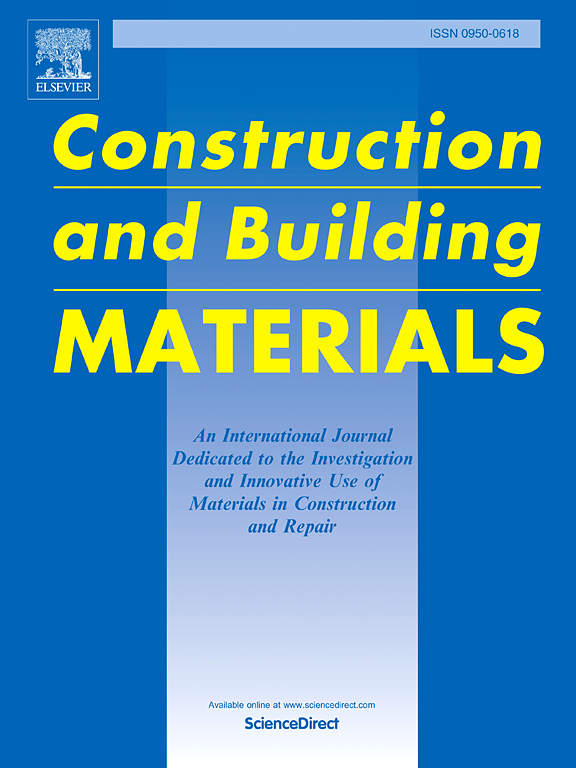A comprehensive study on PANI-MnO2 solid-state reference electrodes for in-situ corrosion assessment in concrete infrastructure
IF 7.4
1区 工程技术
Q1 CONSTRUCTION & BUILDING TECHNOLOGY
引用次数: 0
Abstract
Traditionally, liquid-based reference electrodes mounted on surfaces have been the predominant method for monitoring the corrosion of steel rebars in concrete structures. However, solid-state reference electrodes offer a robust alternative, overcoming several limitations of their liquid-based counterparts. The present study aims to evaluate the electrochemical characteristics and effectiveness of solid-state reference electrodes fabricated from PANI-MnO2 nanocomposites in a simulated concrete environment. The nanocomposite material was synthesized through the chemical oxidative polymerization of aniline in the presence of MnO2, leading to oriented coupling and dissolution-recrystallization processes that initiated the nucleation growth of MnO2 crystals. This was followed by the oxidative coupling of aniline monomers onto the MnO2 crystals, forming the PANI-MnO2 nanocomposite. A comprehensive suite of analytical techniques, including Fourier-transform infrared spectroscopy (FTIR), X-ray diffraction (XRD), scanning electron microscopy (SEM), transmission electron microscopy (TEM), and X-ray photoelectron spectroscopy (XPS), was employed to corroborate the composition, morphology, and crystal structure of the nanocomposite. SEM/TEM imaging confirmed the envelopment of MnO2 nanorods by PANI layers, while FTIR and XPS analyses substantiated the chemical interaction between PANI and MnO2. The fabricated PANI-MnO2-based solid-state reference electrodes (PM-SSRE) were subsequently characterized for their electrochemical stability, reversibility, and polarization resistance in simulated concrete pore (SCP) solutions and cement extracts containing varying concentrations of NaCl (0 %, 1 %, 2 % and 3 %). Various electrochemical techniques, including open-circuit potential (OCP), cyclic polarization, electrochemical impedance spectroscopy (EIS), and potentiodynamic polarization, were utilized for this purpose. The results indicated that PM-SSRE demonstrated superior electrochemical stability, reversibility, and polarization resistance across all test solutions. Hence, PM-SSREs are recommended for in-situ corrosion monitoring applications in concrete structures, given their ability to assess steel rebars’ passive and corrosive states accurately.
求助全文
约1分钟内获得全文
求助全文
来源期刊

Construction and Building Materials
工程技术-材料科学:综合
CiteScore
13.80
自引率
21.60%
发文量
3632
审稿时长
82 days
期刊介绍:
Construction and Building Materials offers an international platform for sharing innovative and original research and development in the realm of construction and building materials, along with their practical applications in new projects and repair practices. The journal publishes a diverse array of pioneering research and application papers, detailing laboratory investigations and, to a limited extent, numerical analyses or reports on full-scale projects. Multi-part papers are discouraged.
Additionally, Construction and Building Materials features comprehensive case studies and insightful review articles that contribute to new insights in the field. Our focus is on papers related to construction materials, excluding those on structural engineering, geotechnics, and unbound highway layers. Covered materials and technologies encompass cement, concrete reinforcement, bricks and mortars, additives, corrosion technology, ceramics, timber, steel, polymers, glass fibers, recycled materials, bamboo, rammed earth, non-conventional building materials, bituminous materials, and applications in railway materials.
 求助内容:
求助内容: 应助结果提醒方式:
应助结果提醒方式:


